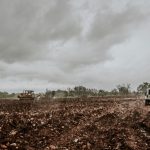Soil, climate and management of the Vineyard respond to a single term, Terroir.
The vine is an expression of the soil, the climate and it’s producer’s hand.
His choices are fundamental and make it possible to characterise a wine with regard to another of the same type produced a few meters a way.
A term related to “climat”, that De Villaine him self defines as ”the encounter between the earth, the vineyard and the vignerons with culture”.
The climate is what characterises wine and make sit extremely recognizable, in short, unique.
In Italy we can translate the term Terroir into wine of the territory, but the sound is different and in a hashtag period the synthes is of words is fundamental.

Antonio Intiglietta. Ladame Vineyard Parabita South Italy.
But only for this reason has it not had the same productive and media impact that it has received in France.
As Ian D’Agata explains, this probably happened mainly because the “Terroir is linked to the cultivation of a few vines”. On the contrary, Italy is characterised by the multiplicity and richness of the types of cultivated vines.
Of course, each variety has characteristic aromas that allow it to be identified.
Analyzing the most cultivated wine in the world, the Cabernet Sauvignon, it shints of blackcurrant, green pepper, cedar, mint and licorice are the ante chamber of a tannic and aging wine cultivated from Bordeaux to Chile for 290,000 hectares.
The hand of man, from his initial choices, can however enhance the “black fruit” with regard to the vegetable scent.
In this way the Cabernet Sauvignon expresses a new character, with out denaturalizingit.
This is why if the value of those who know how to play transforms a piece of wood into a Stradivarius, enhancing the crafts man ship of the construction, so the value of the wine producer exaltsa vine, characterising the vineyard and obtaining a uniquewine.
Tenuta Liliana Staff




